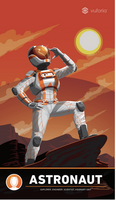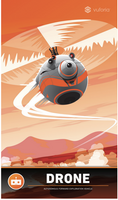AR Project Report


Introduction / Overview
The project is an augmented reality application to visualize the universal gravitation between planets as well as their rotation and revolution. It aims to help teachers to visualize the knowledge in science classes so their students can learn in a more intuitive way.
Description of the application
In a traditional and classic science classroom setting, the method of teaching students the universal gravitation formula often revolves around rote memorization. This approach lacks a comprehensive way of visually illustrating the intricate relationship between mass and distance in the context of gravitational interactions. While educators might make use of videos to supplement the teaching, these visual aids can only provide a limited understanding of the complex concepts at play. Additionally, visualizing the dynamic processes of planetary rotation and revolution has proven challenging within the confines of a traditional classroom environment.
The introduction of augmented reality (AR) tools has the potential to revolutionize how students comprehend these fundamental scientific principles. With this AR tools, students can experience a more immersive and engaging learning environment. The ability to visualize abstract concepts, such as the changes in gravitational force as distance or mass varies, becomes a tangible and interactive experience. This not only aids in understanding the formula, but it also fosters a deeper grasp of the underlying physical phenomena.
This application can simulate the gravitational forces between planets in a visually striking manner. Students can witness the strength of the force altering as they manipulate the variables of mass and distance, allowing them to grasp the direct cause-and-effect relationship. This kind of interactive learning goes beyond textbook descriptions or even video demonstrations, as it actively involves students in the learning process and encourages exploration. Furthermore, AR can be employed to illustrate the intricate dance of planetary bodies in terms of rotation and revolution. Students can observe the graceful orbits of satellites around the planet and witness the varying speeds at different distances.
Interaction Design
The incorporation of interactive elements is essential in an augmented reality application for teaching the concepts of universal gravitation and planetary motion. These interactions provide students with a hands-on and engaging experience, enabling them to directly manipulate the variables and observe the resulting effects. Here's a storyboard illustrating the use case of the interface technology and the interactions within the application:
Manipulating Distance and Force
- The 3D planets are displayed above the target images, with their mass showed on their above, the distance and force showed between two planets.
- User can put the target images closer or further; the 3D planets will follow as user’s manipulating.
- The user can observe how the force changes as the distance changes, reinforcing the inverse square relationship between distance and force.
Visualizing Orbital Motion
- The 3D planet and its satellites are displayed above the target image.
- The planet and its satellites are rotating, and satellites are also revolting around the planet.
- The user can rotate the image target to rotate the 3D planet, observing its rotation on its axis.
Technical Development
The application will require a web camera to track the movement of image targets. The mass text will always be displayed above planet’s arctic to indicate the orientation of planet and will face to the camera so it can always be read by user no matter how the planet is rotated. Same rule applies to the distance and force text, except the position is dynamically changed so they are always between both planets.
The planet mass and rotation of speed can be set in the ImageHandler component in target images, the default speed is 5 degree per second.
The satellite rotation/revolution speed can be set in the Satellite component in the satellite game object. Default speed of both is 5 degree per second.
Descriptions of 3D Models
The 3D models used in this application are imported from Stylized Planet Pack published by One Potato Kingdom Studio.
Preset 2 planets are mars and earth with satellite moon. Each planet has been assigned with a suitable prefab from the package and can be reassigned according to user’s purpose.
Reference
Stylized Planet Pack Full, One Potato Kingdom Studio, Released on July 15th 2019.
https://assetstore.unity.com/packages/3d/environments/stylized-planet-pack-full-...
image: VuforiaMars Image database. (can't find a link of it)
No further reference, some codes are from my tutorial work for KIT307.
Leave a comment
Log in with itch.io to leave a comment.